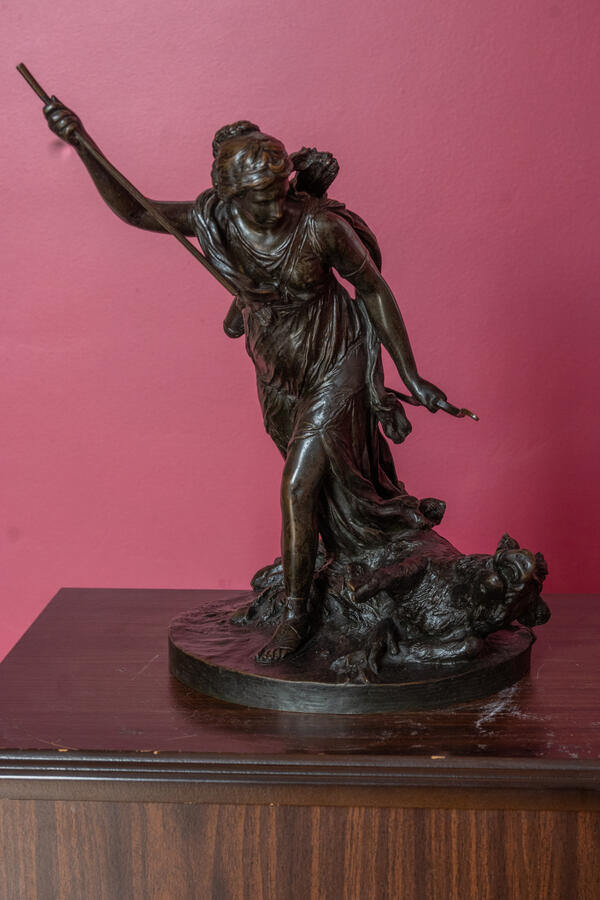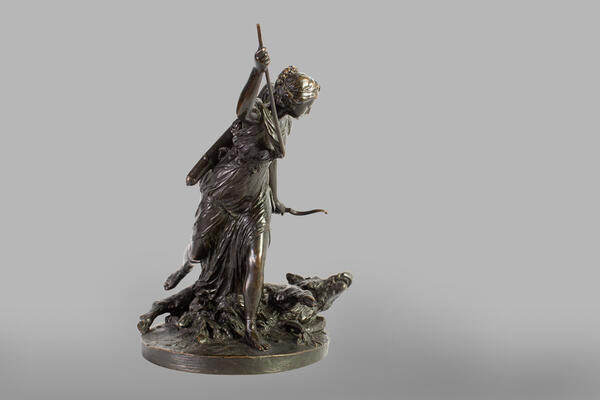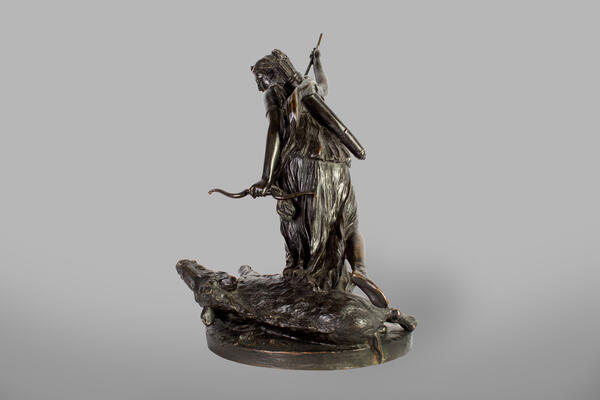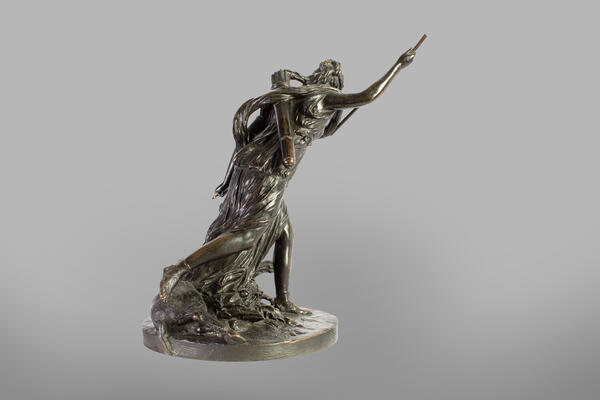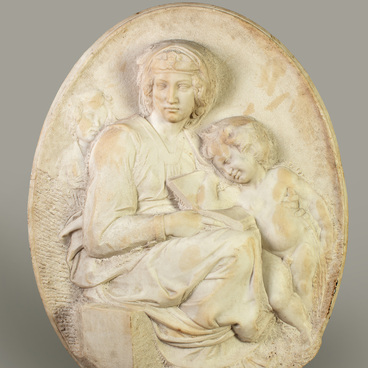French sculptors are mostly represented in the collection of the Tambov Art Gallery through figurines of the 18th–19th centuries. The bronze group of figurines named “Diana on the Hunt” was acquired in 1975 from N.F. Khristoforov.
The dynamic composition shows a woman holding a spear over a defeated animal. The inscription on the base indicates the name of the sculptor — Edmé Bouchardon (1698–1762). He was one of the most famous masters of the mid-18th century — the period that marked the transition of French art from 17th-century Classicism to Rococo, the style of Louis XV. Bouchardon was a student of Guillaume Coustou. In 1722, he received the Prix de Rome, went to Italy to hone his skills, and soon became so famous that the Duke of Antin summoned the master back to Paris, where a studio in the Louvre was waiting for him.
The sculptor tried to cultivate a taste for ancient art in his contemporaries. Ever since his early works, Bouchardon intended to forgo the theatrics of Rococo and revive the eloquent simplicity of Classicism. The composition of the sculpture “Diana on the Hunt” is one of the characteristic works of Bouchardon, who often depicted scenes of fighting or taming animals. Following his mentor Guillaume Coustou, Bouchardon strove for a freer interpretation of reality in its diversity, embodying the mythological content in relatable and precise images. The expressiveness is reflected through the dexterous huntress’ figure, shown as if on the run, her energetic and passionate gesture, and the figure of the wounded roaring boar. At the same time, the soft, free manner of modeling, fanciful silhouette lines and folds of fabric, and dynamic composition correspond to the general decorative vision that is part of Bouchardon’s style.
However, the composition raises questions in terms of its plot. Diana, the daughter of Jupiter and Latona, is considered the goddess of animals and the hunt. Most often, she is depicted with a bow and a quiver behind her back, next to her symbol animals — a deer and a dog. But this sculpture shows a huntress with a boar, which brings to mind another story — a Greek legend about the Calydonian boar that terrorized the whole country. Atalanta, a woman of extraordinary beauty and courage, took part in the hunt for the beast alongside famous heroes. When the boar rushed at the hunters, Atalanta succeeded in wounding it. The question naturally arises whether it is actually Atalanta the “indomitable” that was eternalized in this figurine.
The dynamic composition shows a woman holding a spear over a defeated animal. The inscription on the base indicates the name of the sculptor — Edmé Bouchardon (1698–1762). He was one of the most famous masters of the mid-18th century — the period that marked the transition of French art from 17th-century Classicism to Rococo, the style of Louis XV. Bouchardon was a student of Guillaume Coustou. In 1722, he received the Prix de Rome, went to Italy to hone his skills, and soon became so famous that the Duke of Antin summoned the master back to Paris, where a studio in the Louvre was waiting for him.
The sculptor tried to cultivate a taste for ancient art in his contemporaries. Ever since his early works, Bouchardon intended to forgo the theatrics of Rococo and revive the eloquent simplicity of Classicism. The composition of the sculpture “Diana on the Hunt” is one of the characteristic works of Bouchardon, who often depicted scenes of fighting or taming animals. Following his mentor Guillaume Coustou, Bouchardon strove for a freer interpretation of reality in its diversity, embodying the mythological content in relatable and precise images. The expressiveness is reflected through the dexterous huntress’ figure, shown as if on the run, her energetic and passionate gesture, and the figure of the wounded roaring boar. At the same time, the soft, free manner of modeling, fanciful silhouette lines and folds of fabric, and dynamic composition correspond to the general decorative vision that is part of Bouchardon’s style.
However, the composition raises questions in terms of its plot. Diana, the daughter of Jupiter and Latona, is considered the goddess of animals and the hunt. Most often, she is depicted with a bow and a quiver behind her back, next to her symbol animals — a deer and a dog. But this sculpture shows a huntress with a boar, which brings to mind another story — a Greek legend about the Calydonian boar that terrorized the whole country. Atalanta, a woman of extraordinary beauty and courage, took part in the hunt for the beast alongside famous heroes. When the boar rushed at the hunters, Atalanta succeeded in wounding it. The question naturally arises whether it is actually Atalanta the “indomitable” that was eternalized in this figurine.

